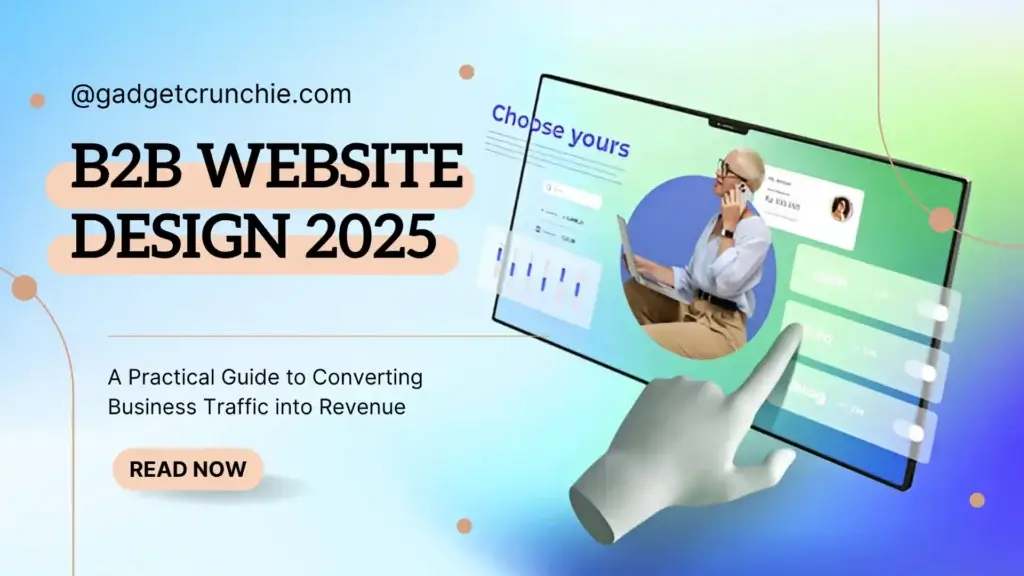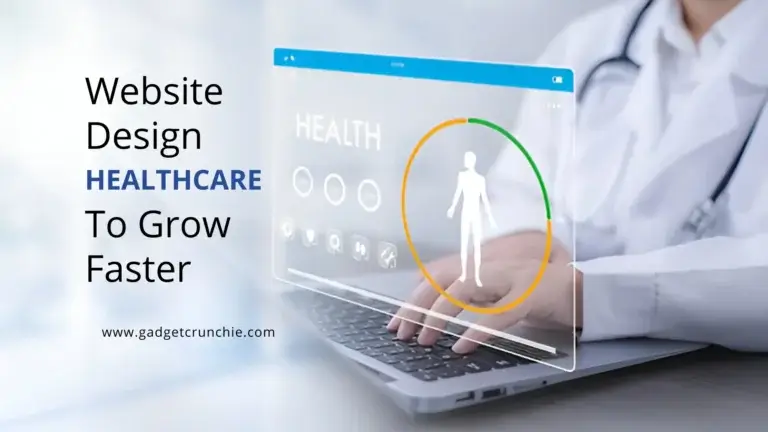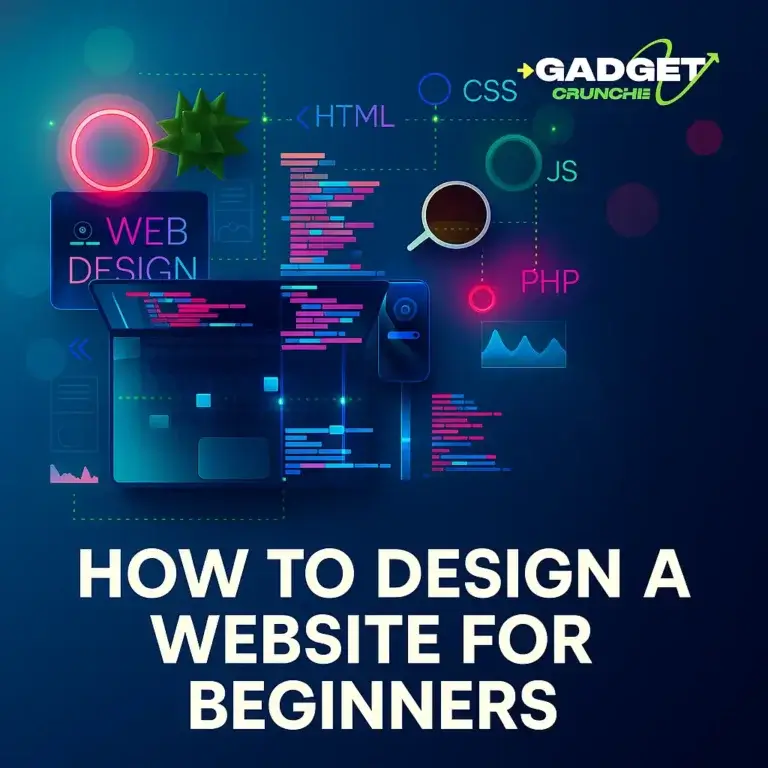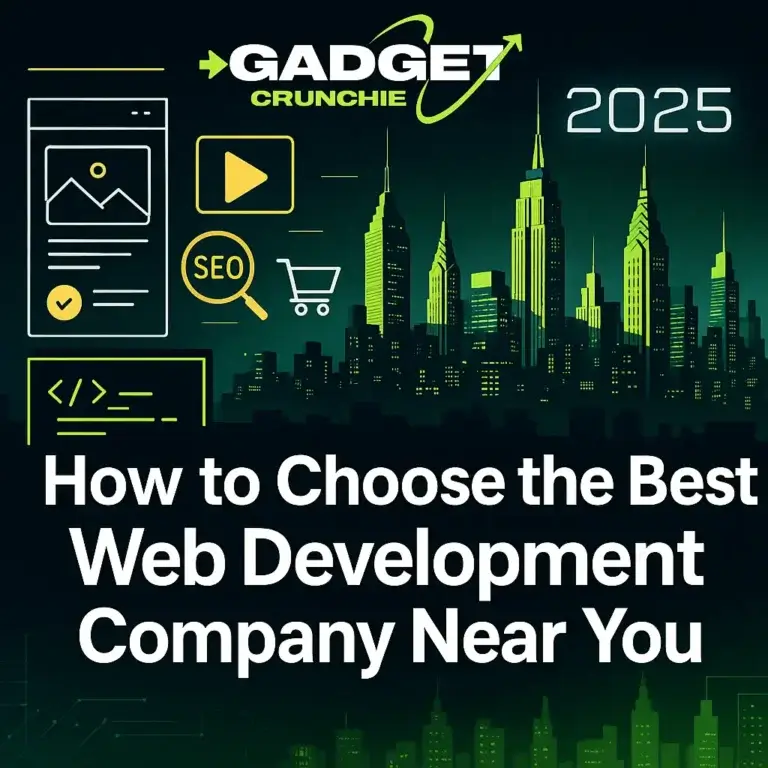B2B Website Design 2025: A Practical Guide to Converting Business Traffic into Revenue

The B2B buying process has changed. In 2025, a B2B website is no longer just a digital brochure—it’s a sales rep, a branding asset, and a lead generation machine, all in one. Whether you’re a startup or an enterprise vendor, designing your B2B website for today’s expectations is essential to stay competitive.
This guide walks through the challenges, current trends, and what a high-converting B2B website must include in 2025.
The Problem: B2B Websites Still Fail to Generate Qualified Leads
Despite investing in ads, SEO, and email funnels, many B2B companies are still dealing with:
- High bounce rates
- Low demo or quote request submissions
- Outdated, cluttered websites
- Content that doesn’t answer buyer intent
- Generic CTAs and confusing navigation
A 2024 HubSpot report showed that 68% of B2B buyers leave a vendor’s site without taking any action, often due to poor design and lack of relevant information.
Agitation: Missed Opportunities in the Buyer Journey
B2B buyers in 2025 are more informed, faster, and prefer to self-educate. Research shows:
- 89% of B2B buyers conduct online research before speaking to sales
- Over 70% expect to self-navigate through content before booking a demo
- Buyers now compare 3–5 competitors online before shortlisting one
If your site is hard to navigate, slow, or lacks convincing proof, they will not come back.
You’re not just losing a lead. You’re handing it to a competitor who invested in a better site experience.
Solution: Build a B2B Website That Educates, Engages, and Converts
The solution isn’t flashy graphics or trendy animations. It’s building a clear, purposeful, user-first website that solves business problems and earns trust.
Let’s break down what a winning B2B website looks like in 2025. Read the latest blog post iPhone 17 Pro Max 2025.
1. Fast, Mobile-Optimized Performance Is Mandatory
In 2025, Google’s Core Web Vitals will directly impact your rankings. Plus, mobile traffic accounts for over 60% of B2B traffic, especially in industries like SaaS, marketing, and logistics.
🔧 Essentials:
- Load speed under 2.5 seconds
- Responsive layout for phones and tablets
- Lazy loading for images and videos
- Use of performance-optimized hosting (e.g., Cloudflare + LiteSpeed)
2. Clear Positioning and Value Proposition in First 5 Seconds
Your homepage hero section should answer:
- What do you offer?
- Who is it for?
- What value or result can it provide?
📝 Example:
“AI-Powered Forecasting Tools for Supply Chain Teams. Cut logistics costs by 30% in 90 days.”
This direct value messaging helps qualify visitors immediately.
3. Navigation Structure That Follows the B2B Buyer Journey
B2B websites need a logical, role-based structure. Think of your audience:
- Decision-makers (C-level)
- Technical evaluators (IT, engineers)
- Procurement (compliance, pricing)
Your nav bar should include:
- Solutions by Industry or Use Case
- How It Works
- Pricing
- Case Studies
- Resources or Blog
- Contact/Schedule Demo
🔎 According to Forrester, 74% of B2B buyers get frustrated if the website content is not tailored to their role.
4. Conversion-Focused Landing Pages for Each Product or Service
Every product or service deserves a dedicated page that includes:
- Benefit-driven headline
- Visual explanation (diagrams or short video)
- Social proof (logos, testimonials)
- CTAs like “Book a Demo” or “Download a Use Case”
👉 Example from real 2024 SaaS brand:
A cybersecurity provider redesigned their product landing pages to include real-time chat, and demo sign-ups increased by 62% in three months.
5. Proof Elements: Trust Signals That Support Your Claims
In B2B, trust wins. Add:
- Client logos
- Case studies with data
- Testimonials (preferably with job title/company)
- G2, Capterra, or Trustpilot reviews
- Certifications or awards
📈 Example:
Adding a case study carousel on the homepage helped a logistics platform raise inbound inquiries by 35%, based on a 2024 internal report.
6. Content That Builds Authority and Educates Buyers
B2B buyers are constantly researching. Your blog, guides, and FAQs should help them:
- Understand their problem
- Learn solutions
- Compare providers
- Justify purchase decisions internally
Top formats that rank and convert:
- “How to” guides (e.g., “How to Choose a B2B CRM in 2025”)
- Industry-specific use cases
- ROI calculators
- Product comparison pages
Bonus: Long-form content ranks higher and builds domain authority over time.
7. Live Chat + AI-Powered Assistants That Respect Buyer Intent
AI chatbots in 2025 do more than greet—they help:
- Qualify leads (based on company size, budget)
- Route technical queries to the right person
- Schedule demos in real-time
Recommended tools:
- Drift
- Intercom
- Chatbase with GPT-4 backend
📊 Use Case: A software vendor added a chatbot to screen leads. Result? Sales team time saved: 19 hours/week, while increasing qualified demos by 22%.
8. Lead Magnets and Micro-Conversions to Capture Emails
Not everyone is ready to book a call. Offer micro-conversions:
- Downloadable whitepapers
- Product brochures
- Industry-specific templates
- Free tools (ROI calculators, checklists)
Make it easy to exchange value for email.
🛠 Tools to integrate: HubSpot, ConvertKit, ActiveCampaign
9. SEO Optimization for Intent-Based, Bottom-Funnel Keywords
Target keywords like:
- “Best ERP software for manufacturers 2025”
- “B2B website design checklist”
- “Enterprise Project Management Software Comparison”
Use:
- Keyword-optimized headings (H1, H2, H3)
- Internal links between related blogs
- Schema markup (FAQs, reviews, breadcrumbs)
- Descriptive meta titles and descriptions
Want an example of smart internal linking?
👉 See our guide on Healthcare Website Design 2025 to explore how user-first content works across industries.
10. CRM, Analytics, and Marketing Automation Integration
Track what matters:
- Where users come from
- What content do they read
- Which CTAs do they click
- Which channels convert best
Essential stack in 2025:
- Google Analytics 4
- HubSpot CRM
- Hotjar or Microsoft Clarity (for heatmaps)
- Zapier for cross-app automation
🎯 A 2025 Salesforce case study showed companies integrating CRM + analytics increased MQL-to-SQL conversion by 34% in 90 days.
Real-World Case Study: B2B Redesign That Drove Results
Client: B2B Supply Chain SaaS, US-based
Old Site Issues:
- Poor mobile layout
- 8-second load time
- Confusing nav
- Only one CTA on the homepage
New Site (Launched late 2024):
- Built on Webflow with a clean hierarchy
- Industry-based landing pages
- Added chatbot + Calendly demo integration
- Full SEO audit + CRO best practices
Results (in 90 days):
- Demo requests: +72%
- Bounce rate: ↓ 28%
- Mobile conversions: +36%
- Average time on site: 3m 42s
Conclusion: B2B Website Design in 2025 Is About Clarity and Utility
If your B2B website isn’t educating, qualifying, and converting leads, you’re behind. The good news? Most competitors are, too.
Focus on:
- Fast load and mobile experience
- Clear messaging for each user role
- Proof elements that build trust
- Smart CTAs that match buyer readiness
- Seamless integrations for tracking and automation
A good B2B website isn’t built to impress. It’s built to perform.
If you want to read more information about how to boost traffic on your Website, just visit –> The Insider’s Views




